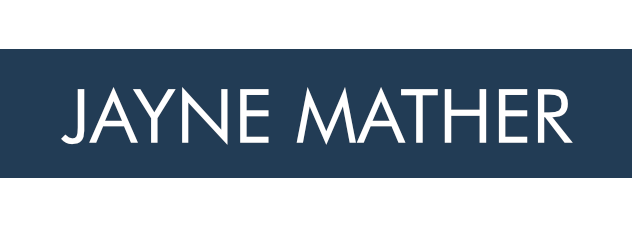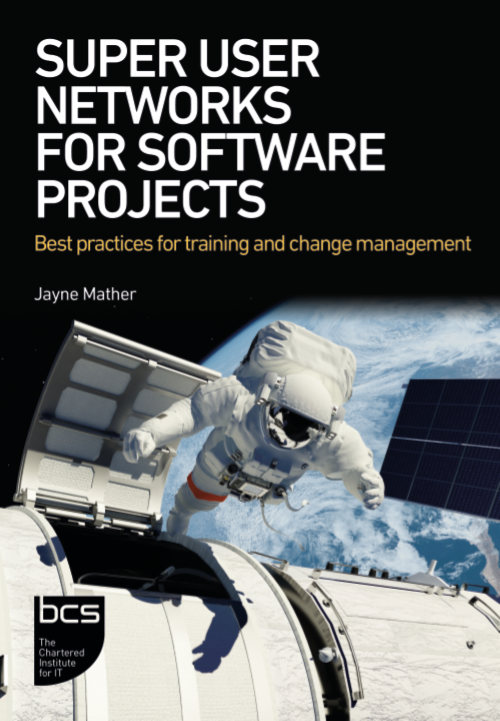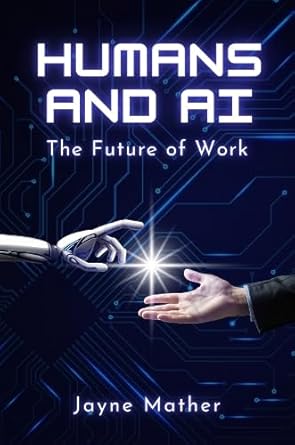AI Predictions: What every Leader Needs to Know Today
Published: Tuesday 6th of May 2025

Redesigning Work: How AI Will Transform Jobs and Organisations Over the Next Decade
The conversations about AI often focus on its power to boost productivity or reduce costs, and the governments of the world are racing to build the required infrastructure. Yet what’s often missing from these conversations is a focus on what this means for people. We need to be discussing what our future will look like and how we prepare for how our jobs will change, how our organisations will evolve, and how we ensure people aren’t left behind.
To secure the benefits of AI, we must look ten years ahead and intentionally redesign how we work. Let’s explore a vision for the workplace of the future and together create a working world that people will want, and one that still delivers real value to our economies and our lives.
How AI Will Change the Shape of Jobs
There is no more stopping AI now than we could’ve ever stopped the internet. Change is gonna come. We’ve been through revolutions before. From the steam engine to spreadsheets, every shift has altered the workplace, but this one is different in both pace and potential. Within a few years, AI will automate vast swathes of routine, repetitive, and data-heavy tasks. Coding, customer service, logistics, content creation, data - many of these jobs will change dramatically or disappear in their current form.
But that doesn’t mean we’ll have nothing to do. We’re not heading toward a future without work, we’re heading toward a future of different work. We’ve seen technology disrupt jobs before, we no longer have typists, switchboard operators, many factory tasks are now done by robots. The people in those roles evolved to other jobs after reskilling. I don’t predict mass job displacement but it’s certainly something we have to be cautious about and the decisions we make now will impact how this plays out.
Some jobs will change, and some new jobs will be created. We’ll see more jobs created in AI-related domains, including machine learning, robotics, data science, AI governance, cybersecurity, and human-AI collaboration design. Already today, AI is helping people be more productive in customer service, marketing, operations, and software development. By 2026, AI could replace or accelerate large portions of knowledge work, including research, strategy, and planning.
Yet some roles will remain distinctly human. Skilled trades, relationship-based roles, leadership, creativity, and ethical decision-making will continue to require people. We need to agree that AI is here to benefit humanity, and that people will be supported, not replaced, by AI.
Human-Centric Redesigns
To thrive in this AI-powered future, the concept of work must evolve.
We will need hybrid-skilled knowledge workers who are industry specialists and digitally fluent. Farmers who work with drone data. Biologists who use AI-powered diagnostics. Designers collaborating with generative tools. Educators using digital tutors.
Reskilling can’t be a reactive effort. It must be embedded into organisational culture and propelled by government incentives. Learning must become lifelong, and companies must deploy urgent reskilling programmes combining coaching, personalised AI-driven real-time support and traditional L&D – designed to help employees thrive in fast-changing roles whilst adapting to technology advances continually.
Amy Webb, founder of the Future Today Institute, described it perfectly: “We won’t need to prepare our workforce just once, with a few changes to the curriculum. As AI matures, we will need a responsive workforce, capable of adapting to new processes, systems, and tools every few years.”
What the AI-Integrated Organisation Will Look Like
Let’s fast forward.
It’s 2033. Your workplace has evolved into a responsive, data-rich, hybrid environment. Most routine operational tasks are handled by AI agents. You collaborate daily with your own personal AI assistant. These systems know your preferences, working style, strengths, and even when you’re likely to need a break.
You still lead a team, but the team includes robots and AI agents too. These digital colleagues analyse markets, run predictive models, test prototypes in digital twin environments, and schedule customer interactions. They don’t just execute your prompts and commands, they learn, adapt, and support your strategy.
People work both remotely and on-site. We moved on from the return to the office mandate and empowered adults with the autonomy to decide how best to get the work done. We designed offices to become experiences, where attendance in person has value and purpose. Technology is embedded into every touchpoint with augmented reality for design sessions, biometric desks, and robot concierges.
Offices of the future are designed with human preferences in mind and centred around the 4 C’s: Comfort, Connection, Collaboration and Childcare.
Comfort: for our well-being and positive mental health, to prevent us feeling isolated at home we can choose to spend time in the office, or at co-working spaces we have access to.
Connection: our team performs to its highest standards when we build trust and relationships by connecting personally when we deem it necessary.
Collaboration: some projects and problems, strategies and ideas can benefit by having the brightest minds in the room with you.
Childcare: on-site childcare ensures everyone has the same opportunity to do meaningful work that gives them purpose.
The New Role of Leadership
Leadership in the age of AI won’t be about who knows the most, it’ll be about who can inspire and motivate, who empowers their people, and who can communicate purpose with clarity.
Visionary leaders will be the ones who fuse AI’s analytical power with human strengths like trust-building, emotional intelligence, storytelling, and ethics. They’ll use AI for decision support, not decision replacement and be actively transparent about how AI is used.
Organisations that adopt AI without redesigning for human-AI collaboration will miss the point and the value. As the Harvard Business Review warns, “tomorrow’s leaders will be those that embrace collaborative intelligence... not those that use machines merely to displace workers.”
The Risks We Must Avoid
While the future of AI holds enormous promise, it also carries risks we must manage intentionally.
1. Job Displacement and Economic Inequality
An AI-driven world can generate trillions in GDP. But if productivity gains are used only to cut jobs and costs, we risk exacerbating poverty, crime, inequality and a reliance on social welfare. We need policies like universal basic income, reduced working weeks, and large-scale reskilling programmes to ensure that the benefits are broadly shared.
2. Bias and Ethics
AI systems learn from the past, and if you’ve been on the internet, or indeed in society, we know the past includes bias. Unless we actively audit, monitor, and intervene, we risk amplifying gender, racial, and socio-economic inequalities. We must prioritise inclusive AI teams, open evaluation standards, and ethical oversight structures.
3. Overreliance on Misaligned Systems
As AI models become more powerful, they also become harder to interpret. We’ve already had reports of AI lying to achieve its objectives and the pace of how the technology is evolving is astonishing even those developing it. A rogue or misaligned system doesn’t need to be malicious, just indifferent to human outcomes - and that’s a real danger. I don’t predict AI becoming a Skynet or Ultron style catastrophe, but I do predict that without oversight there will be cases of unintentional consequences through an AI not understanding how nuance, context and human values can shape expected outcomes of stated objectives. Transparency, regulation, and global cooperation must be part of our safety net.
Better Work, Healthier Lives
Done right, AI won’t just make us more productive. It will make us more human.
By removing tedious work, it can give us back the “gift of time” to think, create, rest, mentor, or care. With fewer hours spent on admin or logistics, we could see more time for family, art, health, or even just doing more meaningful, fulfilling work.
Imagine a future where we:
- Work a four-day week with no loss of pay.
- Earn rewards for mentoring or knowledge-sharing.
- Upskill easily through AI-personalised microlearning.
- Have AI co-pilots for every role, helping us be our best selves.
This isn’t a utopian fantasy, it’s within reach. But it requires a redesign of the workplace from the ground up, guided by principles of equity, transparency, and purpose.
Recommendations for Leaders
To prepare for the next decade, here are five steps organisations can take now:
- Craft a Vision
- Define the role of AI in your organisation. Clarify the “why” before the “how.”
- Design for Collaboration
- Redesign workflows, teams, and tech interfaces to allow humans and AI to work side by side with each doing what they do best.
- Reskill Proactively
- Start training people today for the jobs that AI is creating tomorrow. Reward adaptability and continuous learning.
- Build Trust
- Use AI ethically and transparently. Involve employees in decisions about where and how to use it.
Adopt a Human-Centric Mindset.
When we reduce the workload of a person through AI, commit to giving them the gift of time to either pursue more stimulating ideas and projects, to embark on reskilling or to reduce their working week for the same pay with no loss of revenue to the business. Humans will remain the key success driver in your organisation and we should measure success not just by efficiency, but by employee satisfaction, purpose, and impact.
A Future Worth Creating
The next ten years will reshape the workplace more than the last thirty. AI will redefine productivity, roles, industries and ourselves. It’s not a question of when, but how we adopt it.
We have two paths: one where AI is used to replace, surveil, and divide. And one where it is used to augment, empower, and unite. The latter path won’t happen by default. It must be designed.
The future of work is not humans or AI. It’s Humans AND AI working in harmony to build a better world.
Jayne Mather is a Senior Change and Transformation Consultant for Limelight Consulting. Her second book ‘Humans and AI: The Future of Work’ is out now. To find out more about Jayne’s ideas on technology adoption visit www.jaynemather.com/
All references can be found in Humans and AI: The Future of Work published by Business Expert Press.


